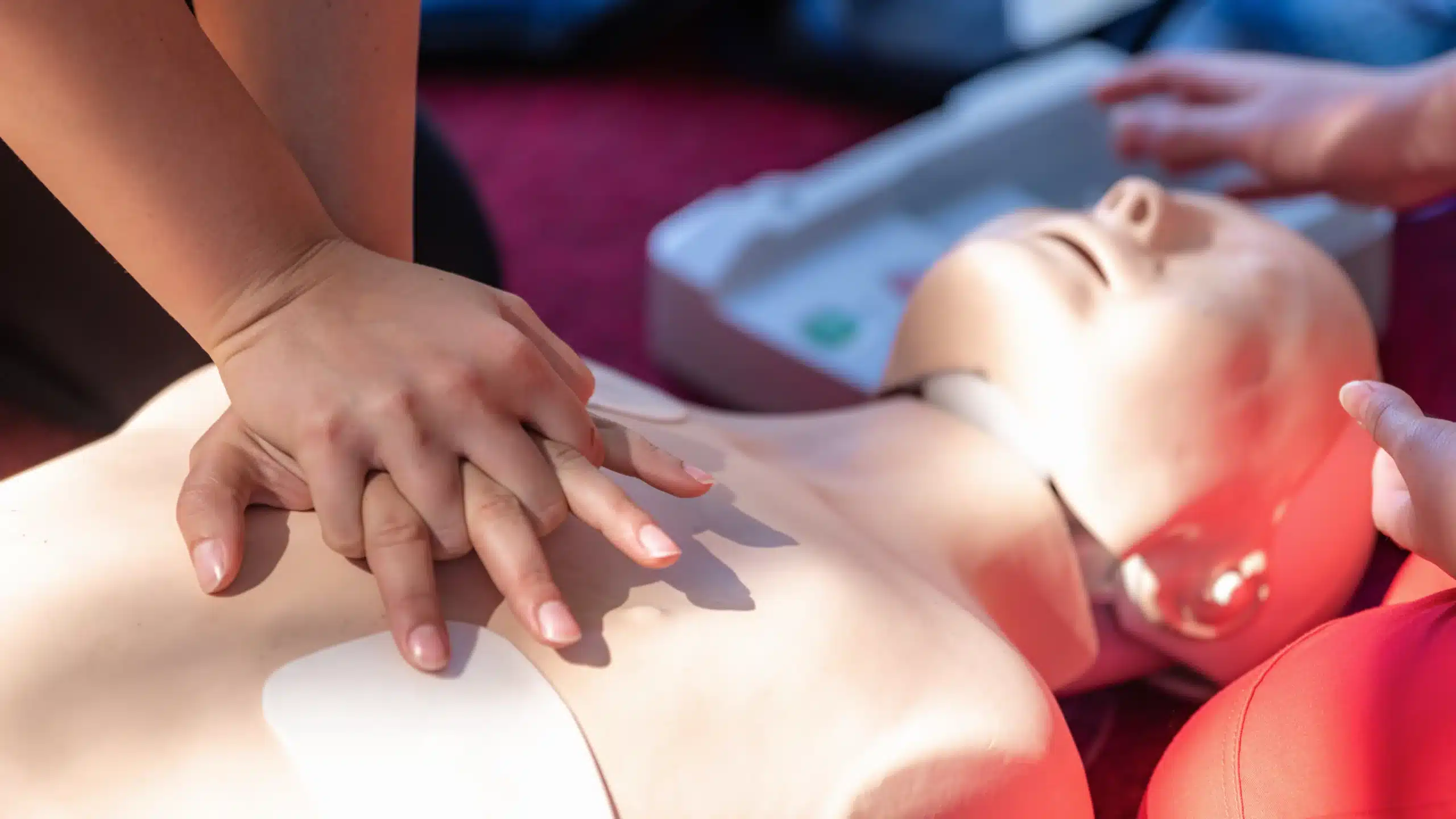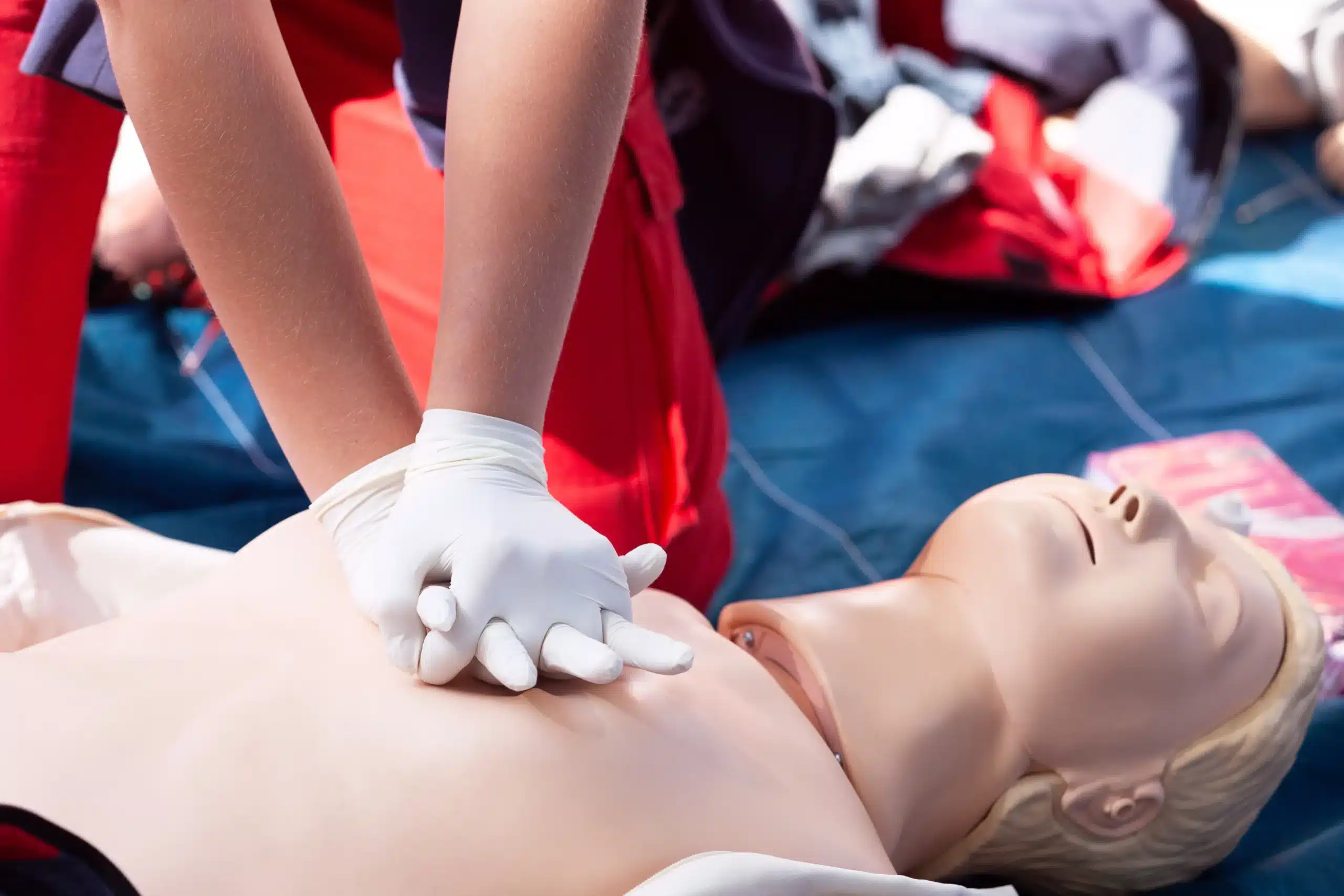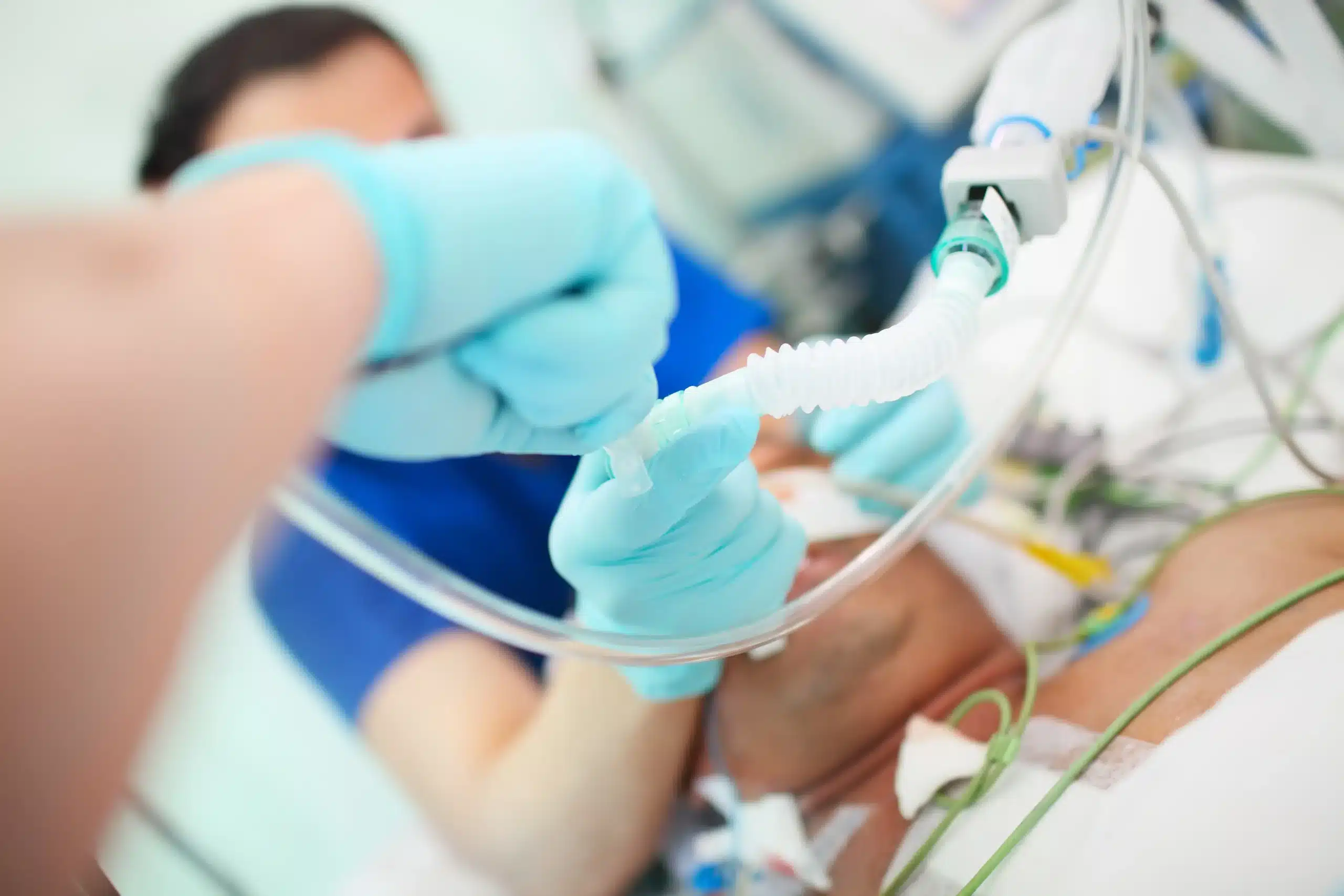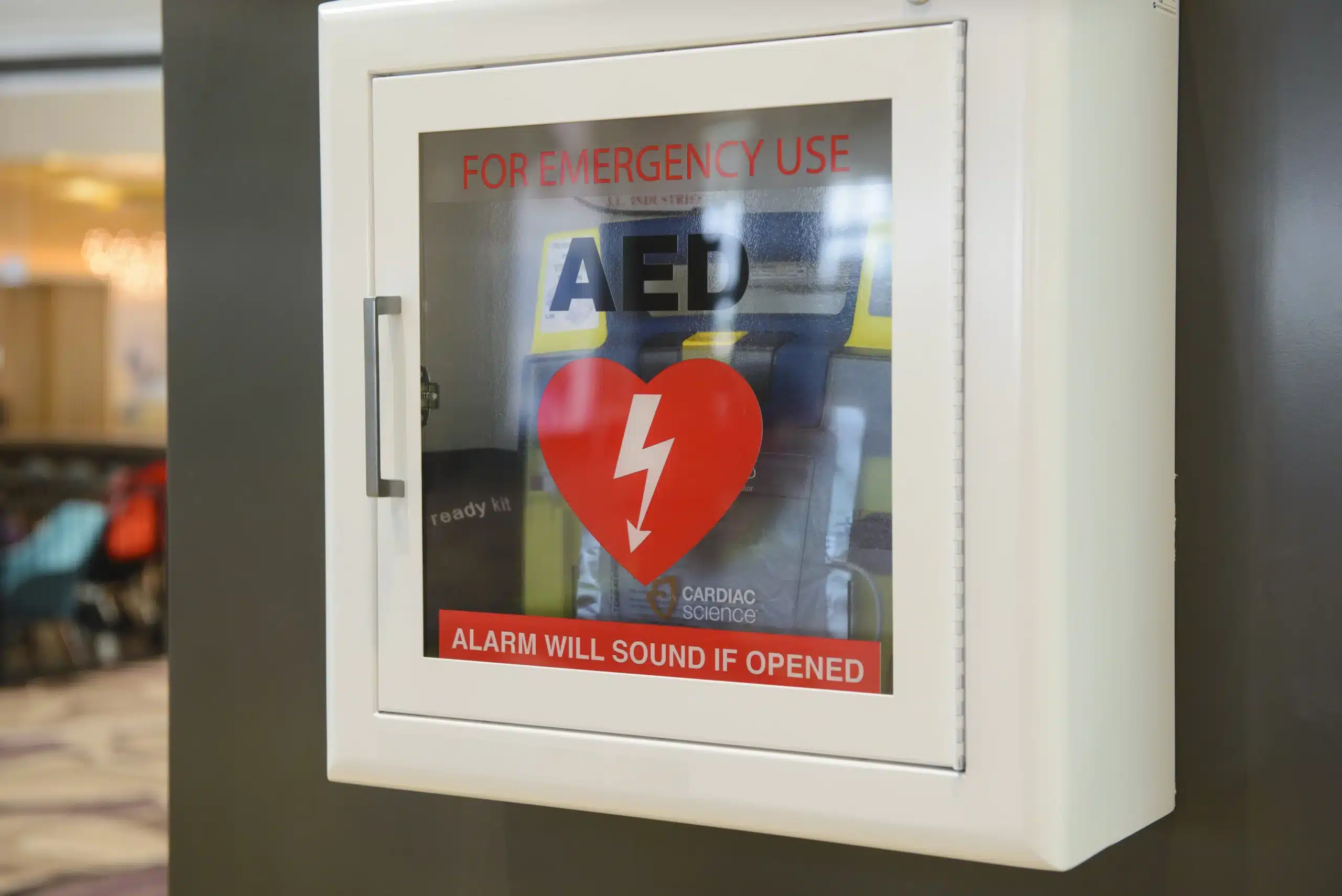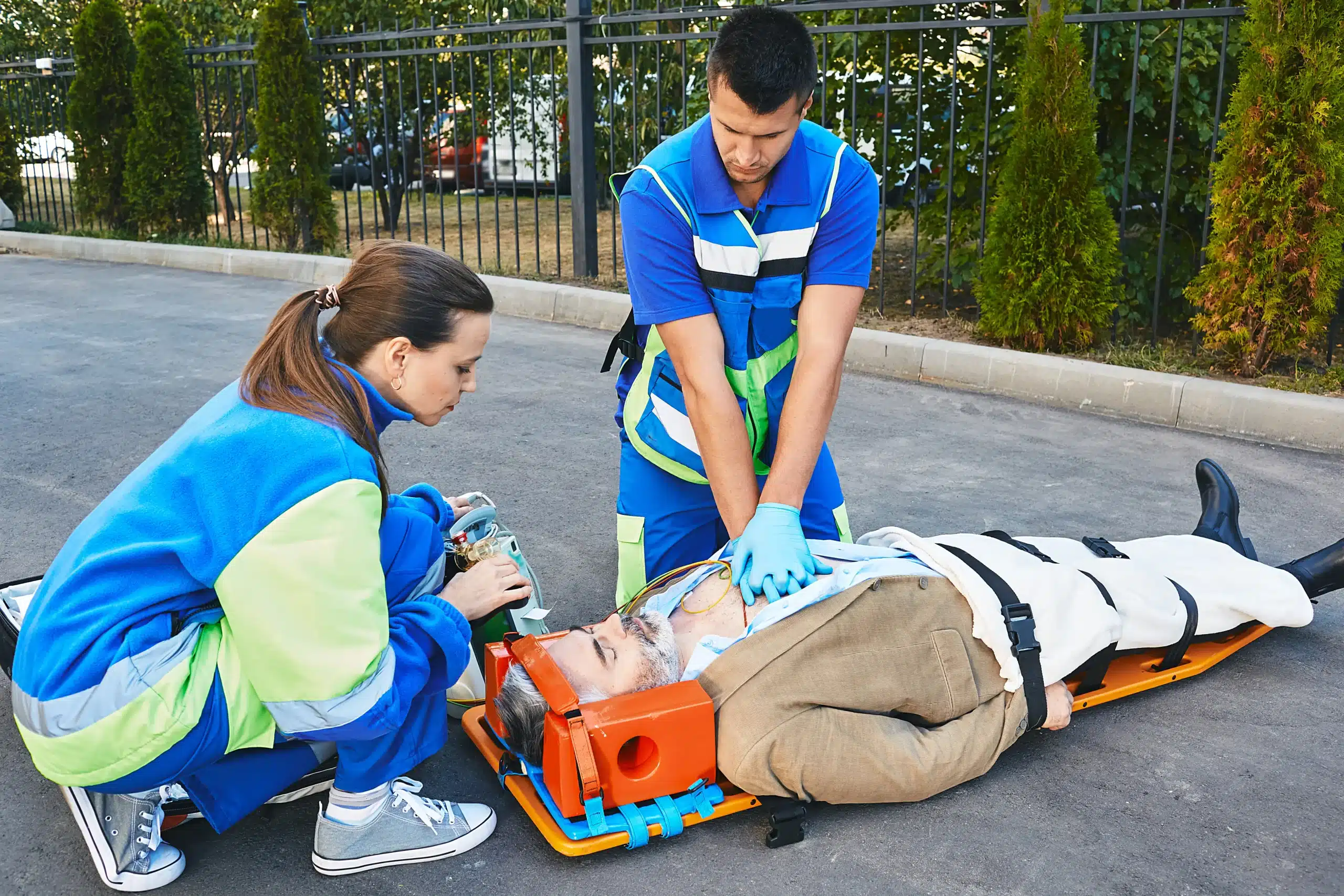Accidents happen, especially with kids. A fall on the playground, a choking incident at dinner, an allergic reaction at a birthday party—these situations can be scary, but knowing pediatric CPR and first aid can help you stay calm and respond effectively. This guide is your resource for finding high-quality pediatric CPR and first-aid training in San Mateo. We’ll cover what you’ll learn in a class, where to find certified courses in San Mateo, and how to choose the right program based on your needs and schedule. We’ll also discuss the long-term benefits of this training, empowering you to create safer environments for children in San Mateo and beyond.
Key Takeaways
- Pediatric CPR and first aid are crucial for child safety: These skills empower you to handle emergencies involving infants and children, addressing their unique physiological needs. Prioritize courses with hands-on practice and experienced instructors.
- Choosing the right course requires careful consideration: Evaluate factors like scheduling, course content, instructor qualifications, and learning format (in-person or blended) to find the best fit for your needs. Compare pricing and read reviews to ensure you’re making an informed decision.
- This training provides lasting benefits beyond the classroom: It builds confidence in emergencies, creates safer environments for children, and can even enhance professional development. The ability to respond effectively in a crisis offers invaluable peace of mind.
What is Pediatric CPR and First-Aid?
Pediatric CPR and first-aid training gives caregivers the skills to handle emergencies involving infants and children. It’s important to remember that children aren’t just small adults—their bodies work differently. This training addresses those key physiological differences and teaches techniques specifically adapted for young ones. Pediatric first-aid covers a range of topics, from CPR for infants and children to handling common childhood injuries like cuts, burns, and bruises. Think of the everyday bumps and scrapes that happen on a playground—this training prepares you for those, too. This resource offers a deeper look at what pediatric first aid entails.
Beyond the physical techniques, pediatric first-aid and CPR training also emphasizes emotional support. Knowing how to reassure a frightened child (and their caregiver) during a stressful situation is a crucial part of the process. This training is invaluable for anyone regularly caring for children, including parents, teachers, nannies, and camp counselors. Learn more about why pediatric first aid and CPR training is so important, especially for those working with children. By understanding these specialized techniques, caregivers can respond effectively in emergencies, ensuring the health and safety of the children in their care.
Best Pediatric CPR and First-Aid Certifications in San Mateo
Finding the right pediatric CPR and first-aid certification course can feel overwhelming. To help you, we’ve compiled a list of respected providers in San Mateo and surrounding areas. Remember to check each organization’s website for the most up-to-date course schedules and offerings.
Safety Training Seminars
Safety Training Seminars offers a range of American Heart Association (AHA) certified courses in CPR, BLS, ACLS, PALS, and First Aid. Their programs cover essential pediatric CPR and first-aid skills, and their AHA certification is widely recognized. This makes Safety Training Seminars a solid option if you’re looking for comprehensive, credible training. They also offer a low price guarantee, so you can feel confident you’re getting a good value.
San Mateo CPR & First Aid Classes
In-Home CPR provides on-site training throughout San Mateo County and the Bay Area. They offer both AHA and American Safety & Health Institute (ASHI) certified courses, including options specifically for pediatric care. This flexibility allows you to choose the certifying body that best suits your needs. Their in-home option is particularly convenient for busy parents or groups.
College of San Mateo
The College of San Mateo’s Kinesiology 119 course provides a combined Adult and Pediatric First Aid/CPR/AED certification valid for two years. This is a great option if you’re looking for a comprehensive course that covers both adult and child emergencies. Check their course catalog for availability and registration details.
American Red Cross
The American Red Cross offers a variety of pediatric first aid and CPR courses. Their Heartsaver Pediatric First Aid CPR AED course is a popular choice for parents, caregivers, and educators. The Red Cross is a trusted name in emergency preparedness, and their certification is widely accepted.
Stanford Health Care
Stanford Health Care offers various training programs, including pediatric CPR and first aid. While their website doesn’t specifically list pediatric courses, it’s worth contacting them directly to inquire about current offerings. Their focus on healthcare makes them a potentially valuable resource for in-depth training.
San Mateo Medical Center
San Mateo Medical Center provides community health programs, which may include pediatric CPR and first-aid training. Check their website or contact them directly for more information on specific courses and schedules. Their community focus makes them a good resource for local residents.
What Happens in a Pediatric CPR & First-Aid Class?
Knowing what to expect can help you feel more prepared and confident going into a pediatric CPR and first-aid class. Here’s a breakdown of what you’ll typically learn and experience:
Course Content & Key Skills
In a pediatric CPR and first-aid class, you’ll learn how to respond to various emergencies involving infants and children. The curriculum covers essential skills such as performing CPR on infants and children, managing choking incidents (a significant hazard for young children), and treating common injuries like cuts, burns, and bruises. You’ll also learn to recognize the signs of allergic reactions, poisoning, and other medical emergencies. For a more detailed look at what’s covered, this guide offers a comprehensive overview of pediatric CPR and first aid.
Class Length & Formats
Pediatric CPR courses typically include fundamental first-aid training. These combined courses can range from a few hours to a full day, depending on the level of detail. Some courses may offer a blended learning format, combining online instruction with in-person skills practice. This flexibility allows you to complete some of the coursework at your own pace before attending a hands-on session.
Certification & Recognition
Upon successful completion of the course, you’ll receive a certification valid for two years. This certification serves as proof of your ability to provide pediatric first aid, which is essential for childcare providers, parents, and anyone working with children. It demonstrates your commitment to child safety and can be a valuable asset in both personal and professional settings.
Hands-on Practice & Class Size
Hands-on practice is a crucial component of effective CPR and first-aid training. Most classes emphasize practical exercises and simulations to build confidence and ensure you can apply the skills learned in a real emergency. Smaller class sizes often provide more individualized attention from instructors, allowing for personalized feedback and more opportunities to practice. Before committing to a course, check out past participant feedback. Reviews and testimonials offer valuable insights into a program’s quality and effectiveness.
Instructor Qualifications & Training Effectiveness
When choosing a pediatric CPR and first-aid course, the instructor’s qualifications are essential. Look for courses led by experienced professionals with relevant backgrounds and up-to-date certifications to ensure you learn the most current, effective techniques.
EMS & Healthcare Backgrounds
Instructors with backgrounds in EMS (like EMTs and paramedics) or nursing (RNs) bring real-world experience to the classroom. They’ve handled diverse emergencies and can offer practical insights beyond the textbook. Safety Training Seminars prioritizes instructors with these backgrounds, giving you a deeper understanding of how to respond effectively under pressure. This practical knowledge can be invaluable in a real emergency.
Ongoing Education & Certifications
CPR and first-aid guidelines are constantly evolving. Choose a course that adheres to the latest standards, like the National Safety Council Pediatric Program, which meets requirements in all 50 states and follows the most recent CPR and ECC guidelines. This commitment to ongoing education ensures your training is current and relevant, equipping you with the best practices for pediatric care.
Participant Feedback
Reading past participant feedback is one of the best ways to gauge a program’s effectiveness. Reviews and testimonials offer valuable insights into the quality of instruction, course materials, and the overall learning experience. Prioritize courses with consistently positive reviews, which indicate a strong track record of impactful training. This firsthand perspective can help you choose a course that meets your needs and builds your confidence.
Cost & Value of Pediatric CPR & First-Aid Classes
Knowing the price ranges and what influences them helps you find the right pediatric CPR and first-aid class for your needs. It’s smart to compare options and understand how the value of these skills goes beyond the initial price tag.
Pricing & Course Options
Combined CPR and first-aid certification classes typically start around $75 in San Mateo. More specialized training, such as Basic Life Support (BLS) certification for healthcare providers, usually costs between $90 and $125. Keep in mind that prices can vary based on the provider, the course format (online, in-person, or blended learning), and the depth of the material covered. For example, a comprehensive pediatric first-aid class that covers a wider range of emergencies might have a slightly higher cost.
Discounts & Group Rates
If you’re training with a group, such as fellow teachers, daycare providers, or a group of parents, be sure to ask about group discounts. Many providers, including Safety Training Seminars, offer reduced rates for larger groups, making training more affordable. Contacting providers directly is the best way to learn about minimum class size requirements for on-site training in San Mateo.
Low Price Guarantee & Competitor Comparison
Safety Training Seminars offers a low price guarantee for their courses in San Mateo County. It’s always a good idea to compare pricing and course offerings from different providers to ensure you’re getting the best value. Consider factors beyond price, too, such as instructor experience, course content, and schedule flexibility.
Long-Term Benefits for Child Safety
The value of pediatric CPR and first-aid training extends far beyond the classroom. These skills empower you to respond effectively in emergencies, potentially saving a child’s life. Pediatric first aid equips caregivers to handle a wide range of situations, from minor injuries to life-threatening events. The confidence and knowledge you gain provide long-term peace of mind, creating safer environments for the children in your care. This preparedness is invaluable, offering a sense of security that goes beyond any price tag.
Choose the Right Pediatric CPR & First-Aid Class
Finding the right pediatric CPR and first-aid class depends on several factors, from your schedule to your learning style. Let’s break down what to consider when making your decision.
Scheduling & Accessibility
Life in San Mateo can be hectic, so flexible class times are essential. Look for courses offered on evenings and weekends, or during the day. Safety Training Seminars, for example, offers classes seven days a week, from 8 am to 10 pm, accommodating various schedules. This availability makes it easier to fit training into your busy life. Consider the location, too. Choose a training center that’s easy to reach from your home or work in San Mateo, Daly City, or Millbrae.
Course Variety & Specializations
Not all pediatric CPR and first-aid classes are created equal. Some focus solely on CPR for infants and children, while others incorporate basic first aid for common childhood injuries like cuts and burns. Think about your specific needs. If you’re a childcare provider, a comprehensive course covering both CPR and first aid is beneficial. Safety Training Seminars offers a range of American Heart Association (AHA) certified courses, including CPR/AED and First Aid, BLS, ACLS, and PALS, ensuring you can find the right fit.
Blended Learning vs. In-Person
Do you prefer the structure of a traditional classroom or the flexibility of online learning? Many providers now offer blended learning options that combine online coursework with in-person skills sessions. This format allows you to learn the basics at your own pace before practicing hands-on skills with a certified instructor. While some online-only options exist, remember that a fully online pediatric first aid and CPR course typically won’t issue a CPR certification unless you complete the required in-person skills evaluation. Safety Training Seminars offers this blended learning format, giving you the best of both worlds.
Why Pediatric CPR & First-Aid Training Matters
Knowing how to respond to emergencies gives you confidence as a caregiver and builds a safer environment for kids. From scraped knees to more serious incidents, pediatric CPR and first-aid training equips you with the skills to handle a range of situations. Let’s explore why this training is so valuable.
Respond to Common Emergencies
Kids, especially younger ones, are prone to minor injuries. A pediatric first-aid course teaches you how to clean and bandage cuts, soothe burns, and assess bumps and bruises. This training covers common childhood illnesses and allergic reactions, too. Having these skills makes you a more effective caregiver and provides immediate comfort to a child in distress. These courses often include CPR training, which teaches you how to respond to breathing and cardiac emergencies in infants and children. This combined knowledge can make a real difference in critical situations.
Legal Compliance & Professional Growth
Many childcare providers and other professionals who work with children are required to have pediatric first-aid and CPR certification. Check your state’s licensing requirements to confirm. Earning these certifications demonstrates your commitment to safety and professionalism. It can also open doors to career advancement and give you a competitive edge in the job market. Plus, staying up-to-date with the latest guidelines ensures you’re providing the best possible care. For convenient and comprehensive training, consider the certification courses offered by Safety Training Seminars.
Confidence in Childcare
Emergencies can be stressful, but having the right training can significantly reduce anxiety and uncertainty. Pediatric first-aid and CPR training gives you the confidence to act quickly and effectively when a child needs help. This confidence translates to a calmer and more reassuring presence for the child, which can make a big difference in a stressful situation. Knowing you have the skills to handle emergencies allows you to focus on providing the best possible care. Explore resources like ChildCareEd for more insights into the importance of these skills.
Safer Environments for San Mateo Children
When more people in a community are trained in pediatric first aid and CPR, it creates a safer environment for everyone. Think of parents, grandparents, coaches, teachers—anyone who interacts with children regularly. By investing in this training, you contribute to a network of prepared individuals who can respond effectively in emergencies. This creates a sense of security and well-being for children and families in San Mateo. Safety Training Seminars offers a variety of courses to help you gain these essential skills. Check out our CPR and first-aid certification courses to find the right fit for you.
Related Articles
- CPR Certification in Daly City: Your Complete Guide – San Mateo CPR Classes
- Why CPR is Critical in Healthcare
- First Aid Training Courses in San Mateo: A Practical Guide – San Mateo CPR Classes
- CPR Training in San Mateo: Your Complete Guide – San Mateo CPR Classes
- HeartCode PALS San Mateo: Your Guide to Certification – San Mateo CPR Classes
Frequently Asked Questions
Is pediatric CPR different from adult CPR? Yes, absolutely. A child’s body is different from an adult’s, so the techniques used in CPR are modified to be safe and effective for infants and children. Pediatric CPR training teaches you these specific techniques, along with how to recognize and respond to age-specific emergencies.
What kind of certification will I receive after completing a pediatric CPR and first-aid course? You’ll receive a certification card valid for two years, typically from the organization that provided the training (like the American Heart Association or the American Red Cross). This card verifies your successful completion of the course and your ability to perform pediatric CPR and first aid.
How long does it take to become certified in pediatric CPR and first aid? Combined pediatric CPR and first-aid courses usually take between four and eight hours to complete, though this can vary depending on the provider and the specific course content. Some courses offer blended learning, allowing you to complete part of the training online at your own pace.
How much does a pediatric CPR and first-aid certification course cost in San Mateo? Prices typically start around $75 and can go up to $125 or more, depending on the training provider, the type of certification offered, and whether the course includes additional topics like BLS. It’s always a good idea to compare prices and ask about group discounts if you’re training with others.
What if I have a busy schedule? Are there flexible class options available? Yes, many providers understand busy schedules and offer classes on evenings, weekends, or weekdays at various times. Some also offer blended learning formats, allowing you to complete some coursework online before attending an in-person skills session. Be sure to check with specific providers in San Mateo for their scheduling options.
